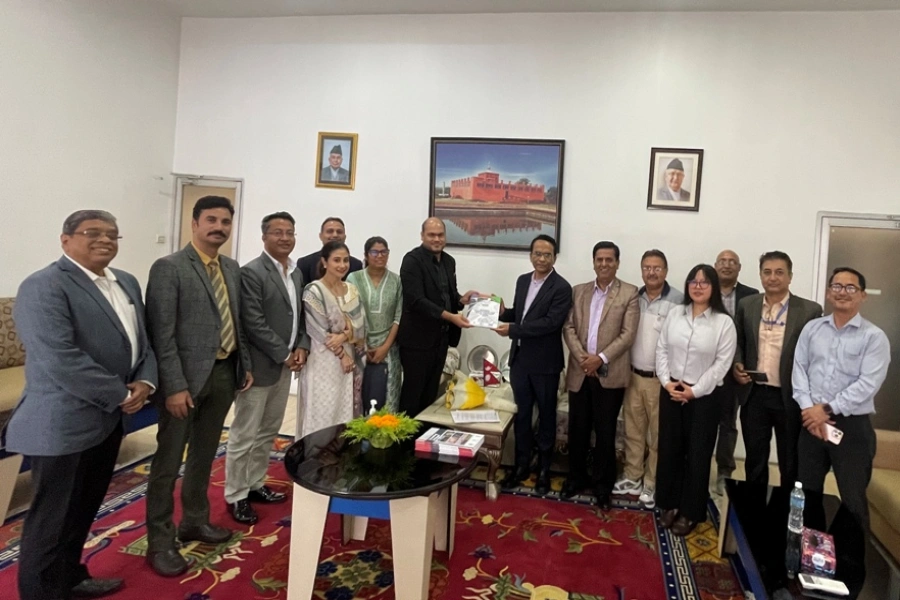Post COVID-19, agriculture should be tailored to create more employment particularly more decent green jobs across the entire food production system.
Due to COVID-19 pandemic, most countries, including Nepal, have faced serious problems in providing employment and means of livelihoods to their people. For the poor countries, the post COVID-19 period is going to be more challenging for creating jobs and providing food to their people. In this context, a question arises: Can job creation in agriculture and productivity increase happen together? While some claim that these two variables can go together, others caution that increase in productivity through modernization or mechanization may pose a risk to employment and rural communities’ livelihoods.
A problem for policy-makers is how to increase agricultural productivity inducing an increase in employment. How can we get the convergence of productivity growth and growth of employment in agriculture? Generally, there is negative relationship between them. If productivity growth is not being accompanied by employment growth, Nepal’s present problem is not going to be solved.
Making value chains inclusive
Some agriculture experts opine that agricultural productivity can trigger decent job creation in the rural areas of developing and low income countries like Nepal if appropriate programs are developed and implemented. Integrating smallholder farmers into inclusive value chains by modernizing agribusiness is seen as one of the effective ways to create better jobs and increase productivity. Modern agricultural value chains usually offer wage and self-employment with better pay and working conditions than in traditional agriculture. Technological innovation in all steps of the value chain could potentially boost agricultural productivity and create attractive jobs for the youth. Thus many good job opportunities on and off the farm remain in agriculture.
Reasons to increase your productivity

The challenge is how to make the agricultural sector and its up and downstream activities competitive through innovation and inclusion. Post COVID-19, agriculture should be tailored to create more employment particularly more decent green jobs across the entire food production system. This employment growth should include more labor intensive green farming practices.
Agricultural development is likely to be catalyzed and sustained with increases in productivity, which may come through industrialization. If agriculture is developed as an industry, it offers a diverse and interesting range of career opportunities. For example, agriculture can have a vibrant agro-supply sector that sells inputs to farmers, such as machinery, crop protection products, animal feed, fertilizer and seed. The sector also needs manufacturers, distributors, researchers, sales executives, traders, advisers, buyers, technologists, product managers, technicians, marketers and logistics experts.
Labor intensive crops
The other option is to grow labor intensive crops. The fruit and vegetable industry is labor intensive requiring more labor in all activities of the value chain. Labor-intensive is a term describing industries or enterprises that require a great deal of labor relative to capital. Examples of labor-intensive industries are forms of agriculture that cannot make use of machinery or make little use of machinery. Different kinds of vegetables and perennial crops like different kinds of fruits, tea, and coffee are some of the example of labor intensive crops. Planting, caring for, and harvesting of these crops require more labor input. Growing vegetables can be an attractive option because there is a relatively short time from planting to harvesting and for some crops there are relatively simple requirements for capital outlay. Their productivity is high and market demands are also increasing. They thus provide less scope to substitute labor for capital and are considered rather labor intensive.
Multiple cropping is also helpful to increase productivity and create jobs. It is the farm system in which farmers grow two or more crops on the same field during one calendar year. Arable crops, vegetables, fiber, or fodder crops are repetitively grown one after the other. Usually, after the main crop is harvested it is followed by the planting of the next, and so until the year is over. Multiple cropping is the most common farm practice of smallholder farmers. This type of cropping efficiently utilizes land, water, and fertilizer, which results in more crops being produced and more profitable farm production.
Intercropping is another form of multiple cropping in which two or more crops simultaneously occupy the same field. In this system, an additional crop is planted in the unused spaces throughout the main crop in the field. Intercropping allows the farmer to grow more than one type of crop on the same piece of land and at the same time.
Something to follow
Productivity-enhancing investments and the integration of smallholders into markets not only improves food security and resilience to food price volatility but also improves incomes and creates jobs in agriculture. Such investment is also needed to develop rural infrastructures for underpinning productivity increases, improved market access, reduced food losses and economic growth.
The transition to more sustainable agriculture practices is needed to support our growing population and also serve as an economic development engine to create jobs and prosperity in the now impoverished and depopulating rural areas.
A large portion of agricultural workers has limited access to education and training, which directly contributes to the labor market’s poor wages. The human resource development area of work should give explicit attention to skills development and decent employment creation through training with a particular focus on women and youths. As the promotion of decent work is integral to green job creation, policy interventions are needed to support the investment in research and knowledge generation for all rural farmers.
A greener agriculture needs a more integrative and participatory learning process in which farmers and professionals in agro-ecological sciences work together to determine how to implement best practices and make farming more productive.
There is also a wide scope for institutional and other reforms in agriculture which increase employment, agricultural productivity and output. Institutional measures such as land reform, contract farming and cooperative farming can be of particular significance. Models that harness economies of scale in production and mass absorption of laborers need to be evaluated and adopted.






































